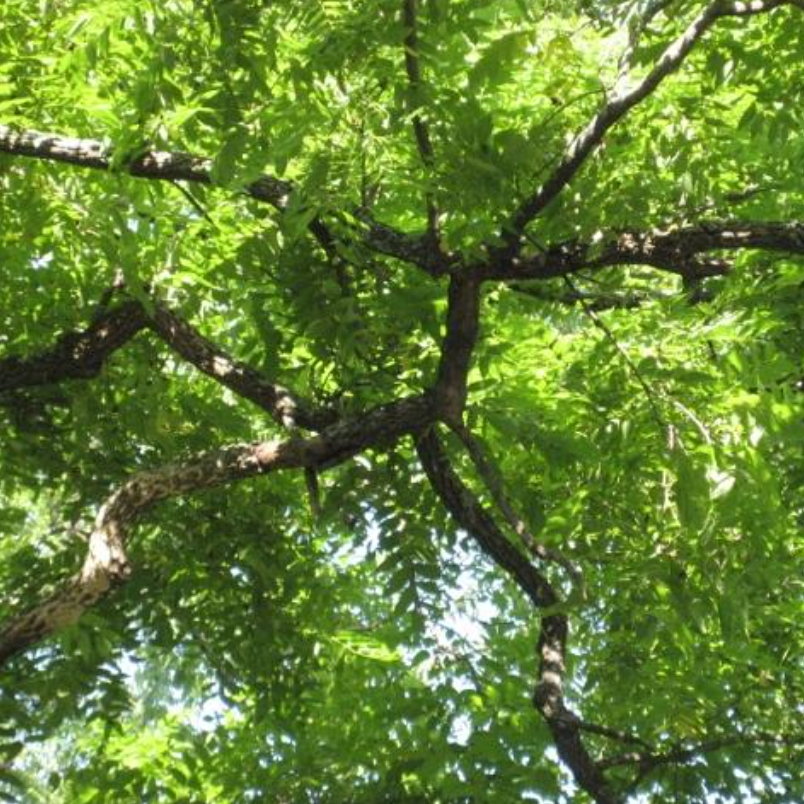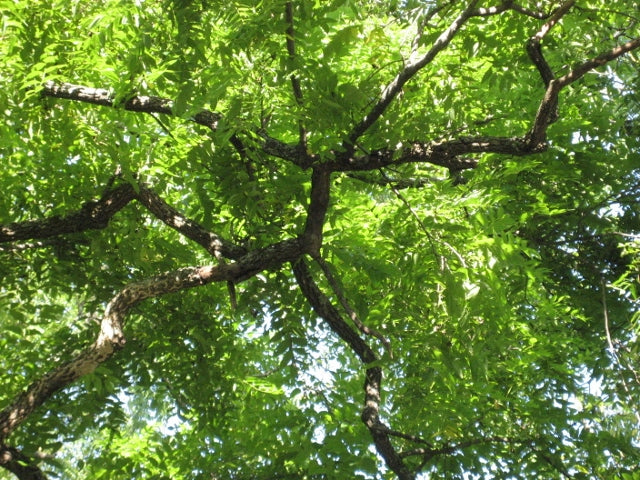
Black Thumb? Maybe it's Black Walnut Thumb.
 When we first started building our cabin in the woods, we had to take down a few trees that were leaning over our soon to be home. They were beautiful big old Black Walnut trees. Because we didn't want them to go to waste, we hired a guy with a portable saw mill. It took us 6 days to mill all the trunks into thick slabs, posts, planks, and extra bits. The experience was tragic, transformative, and inspiring. The wood that came from those trees is not completely air dried and we're making plans for (5 years later1) finishing the trim and kitchen in out little cabin.
When we first started building our cabin in the woods, we had to take down a few trees that were leaning over our soon to be home. They were beautiful big old Black Walnut trees. Because we didn't want them to go to waste, we hired a guy with a portable saw mill. It took us 6 days to mill all the trunks into thick slabs, posts, planks, and extra bits. The experience was tragic, transformative, and inspiring. The wood that came from those trees is not completely air dried and we're making plans for (5 years later1) finishing the trim and kitchen in out little cabin.
There are more Black Walnuts scattered around the land here, and we want to preserve them while still finding ways to grow near them. We've noticed some natives like bloodroot and wild ginger that seem to thrive around the bases, but we haven't attempted growing anything of our own due to the toxic soil chemistry caused by the trees. Tusha, our farm intern, did some research to figure out what we can grow as an understory so we can preserve the remaining trees and expand our gardens.
Here's what she taught us about the situation:
Black walnut, Juglans nigra, is a beautiful and useful tree, native to our region, found in yards across America. Contrasted with its popularity, it’s surprising that its tumultuous relationship with home gardens is not better known. If you’ve had trouble growing vegetables and have written off your gardening skills to a mysterious “black thumb,” take a look at the trees around your garden – your mysterious affliction might actually be “black walnut thumb.”
The roots, branches, leaves, and nut husks contain a substance called juglone, which acts as a respiratory inhibitor to many plants. Many common garden edibles and ornamentals die within two months of juglone exposure.
The toxic zone of a mature tree averages a radius of 50 feet from the trunk and extends each year of the tree’s life. Young trees (up to 8 feet in height) can have a root diameter that is twice as big as the tree’s foliage. Affected species include brassica crops, asparagus, rhubarb, nightshade family, lilies, peonies, flowering tobacco, petunias, and many more, including a number of shrubs and trees. Fortunately, garden harmony is possible without resorting to an axe: as some edibles and ornamentals are unphased by the juglone. Try these:
Vegetables: Squash, Melons, Beans, Carrots, and Corn
Annual Flowers: Calendula, Begonia, Heavenly Blue Morning Glory, Pansies, and Zinnias
Trees: Japanese Maple, Southern Catalpa, Eastern Redbud, Canadian Hemlock, Peaches, Nectarines, Cherries, and Plums
Hebacecous Perennials: Hollyhock, American Wood Anemone, Jack-in-the-Pulpit, Wild Ginger, Astilbe species, Bellflower, Chrysanthemum species, Dutchman's Breeches, Spanish Bluebell, Sweet Woodruff, Jerusalem Artichoke, Hostas, Hyacinth, Wild Bergamot, Sweet Cicely, most Ferns, Summer Phlox, Mayapple, Great Solomon’s Seal, Primrose, Bloodroot, Nodding Trillium…
A more comprehensive list can be found here: http://ohioline.osu.edu/hyg-fact/1000/1148.html
Black Walnuts themselves, are prized as an agricultural product. Not only are they cultivated for high quality wood, but are also used to make dye, oil, cleaner, and an element in water filtration. In the spring, the trees can be tapped for drinkable sap, or it can be boiled down into a sweet syrup. In the fall, edible and delicious walnuts fall to the ground around the tree. The nuts are, however, famously hard to extract. The best known method is to place them on a driveway and run them over with a car, which is in fact the mechanism that commercial extractors imitate. Another possibility is drilling a nut-sized hole into a thick piece of cardboard and smashing the nut through with a hammer. The nut will go through, while the husk will stay behind.
Composting: Walnut leaves can be added together with the rest of the compost, as long as your compost is healthy and active. They will lose their toxicity within a month, as the toxin breaks down when exposed to air, water, and bacteria. However, composting any other part of the tree (branches, bark, nut husks) in a regular compost is not recommended, as those parts can take months to break down. To test the toxicity of finished compost, plant a tomato seedling in it and see if it grows well or is harmed by juglone.






